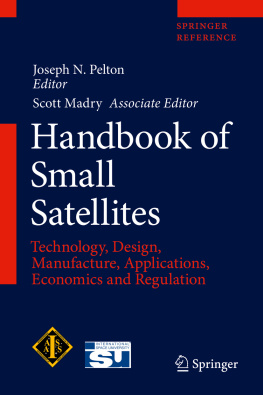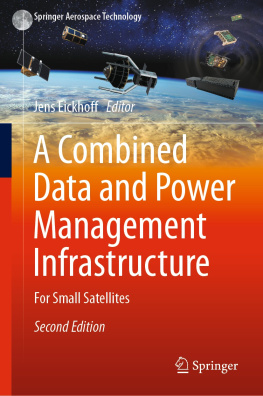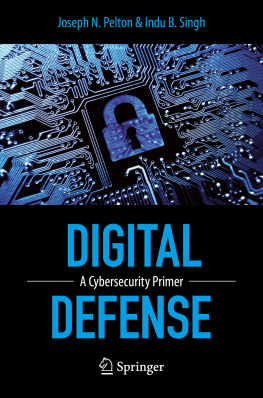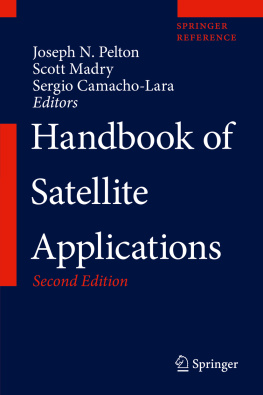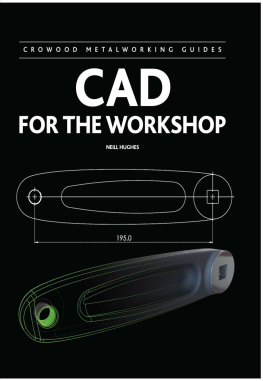Editor
Joseph N. Pelton
Executive Board, International Association for the Advancement of Space Safety, Arlington, VA, USA
International Space University (ISU), Strasbourg, France
ISBN 978-3-030-36307-9 e-ISBN 978-3-030-36308-6
https://doi.org/10.1007/978-3-030-36308-6
Springer Nature Switzerland AG 2020
All rights are reserved by the Publisher, whether the whole or part of the material is concerned, specifically the rights of translation, reprinting, reuse of illustrations, recitation, broadcasting, reproduction on microfilms or in any other physical way, and transmission or information storage and retrieval, electronic adaptation, computer software, or by similar or dissimilar methodology now known or hereafter developed.
The use of general descriptive names, registered names, trademarks, service marks, etc. in this publication does not imply, even in the absence of a specific statement, that such names are exempt from the relevant protective laws and regulations and therefore free for general use.
The publisher, the authors, and the editors are safe to assume that the advice and information in this book are believed to be true and accurate at the date of publication. Neither the publisher nor the authors or the editors give a warranty, express or implied, with respect to the material contained herein or for any errors or omissions that may have been made. The publisher remains neutral with regard to jurisdictional claims in published maps and institutional affiliations.
This Springer imprint is published by the registered company Springer Nature Switzerland AG.
The registered company address is: Gewerbestrasse 11, 6330 Cham, Switzerland
Foreword
The Space Industry as of 2020 continues to be one of the most rapidly growing sectors in the global economy with nearly half a trillion dollars in various activities related to telecommunications, remote sensing and Earth observation, meteorology and climate change monitoring, space navigation, space exploration and experimentation, national defense, as well as a range of brand new space activities. These innovative applications include on-orbit services, RF Geolocation, data analytics, electronic-tracking antenna system in space and on the ground, commercial inter-satellite linkages and data relay, artificial identification systems (AIS), Internet of Things (IoT) services provided by space systems, re-usable launch vehicles, and more. The world of space today has expanded significantly beyond the activities carried out by national and regional space agencies and military and defense-related space agencies. Some market studies have suggested that commercial space activities are now three times larger than governmental and defense-related activities. The so-called NewSpace and Space 2.0 activities have, in large part, been responsible for the rapid growth and expansion of the global space industrial and services activities. Nevertheless, New Space systems and small satellite-related industries will be adversely impacted by the Corona-virus along with the rest of the global economy for the next few years.
One of the factors that has driven this new growth is the new small satellite revolution in the space industry. Tens of thousands of small satellites have been proposed to be deployed in constellations largely in low Earth orbit and largely between 700 km and 1500 km altitudes. These new initiatives to deploy small satellite constellations on a very large scale have, in part, driven new demands for new types of space systems and technology. In particular, it has helped fuel expanded space markets for such new capabilities as highly cost-efficient reusable launch vehicle or highly versatile new phased array antenna systems with electronic-pointing capabilities to support new broadband networking and communications to LEO constellations.
This new Handbook on Small Satellites is an important and comprehensive reference source for all aspects of the amazingly fast-growing field of small satellites. It covers everything from the small femtosats (or chipsats) that are below 100 g in mass to picosats (100 g to 1 kg), nanosats (110 kg) (which also covers cubesats), microsats (10100 kg), and even mini-satellites that can be as large as 1000 kg although some limit these to 500 kg or 600 kg of mass. It covers the latest information about chipsats, pocketqubes, and cubesats for experiments and technology demonstrations but also examines the latest innovations related to commercial small satellites for a new range of space applications. In short, it covers every aspect of the small satellite world. Thus there are articles that discuss launch vehicles, facilitators for launch arrangements, and licensing and regulatory issues and concerns, such as end of life de-orbit and orbital debris challenges. It also addresses financing, new applications, and every aspect of small satellite design and technological engineering. The Handbook of Satellite Applications that preceded this Handbook of Small Satellites provided a broad and useful overview, but this new resource provides within its 82 chapters a wealth of specific information about every aspect of this important new field of space development.
Noted experts around the world from Africa, Asia, Australasia, Europe, North, and South America over seventy in number have contributed to this remarkable publication. Many of these contributors have ties to the International Space University and are, or have been, on its faculty or were at one time students of this global university that is devoted to understanding the cosmos as well as every aspect of space applications. I salute this remarkable new reference handbook and especially Dr. Joseph Pelton, who was the first Chairman of the Board and first Dean of the International Space University, plus all of its authors from around the globe.
President, International Space University Juan de Dalmau
Strasbourg, France
Preface
Why a Handbook on Small Satellites
There are many excellent books and articles now available on all aspects of small satellites. This is a field that has exploded in activity and global interest in the past decade. There are a wide range of individual sources about the technology, others on the applications and services, and yet others about the economics, launch arrangements, policy and regulation, and social and political consequences. Yet there has not previously been a comprehensive and interdisciplinary source of information that collects all of this information together in a holistic way until now. This Handbook of Small Satellites seeks to provide a complete overview of all aspects of the small satellite field.
Thus leading experts from around the world have been recruited to provide in one reference source the latest and state-of-the-art information about small satellites from the smallest Femtosat to the largest and most sophisticated small satellites that are being deployed in so-called mega-LEO satellite constellations. Thus this handbook provides information about the historical development of smallsats as well as an explanation of the various types of smallsats that are being developed and launched today. It also provides latest information on the space and ground systems technology, the applications and services, and the economic, policy, regulatory, legal, business, and social aspects of this burgeoning field of space activity.

